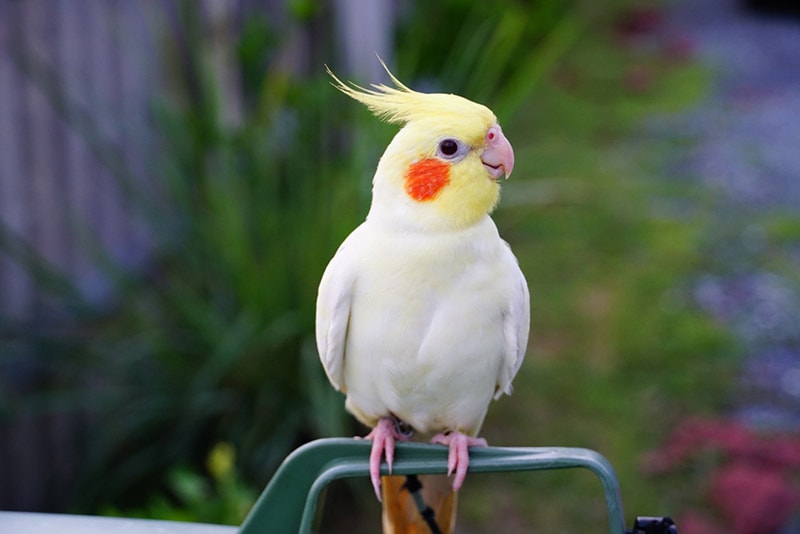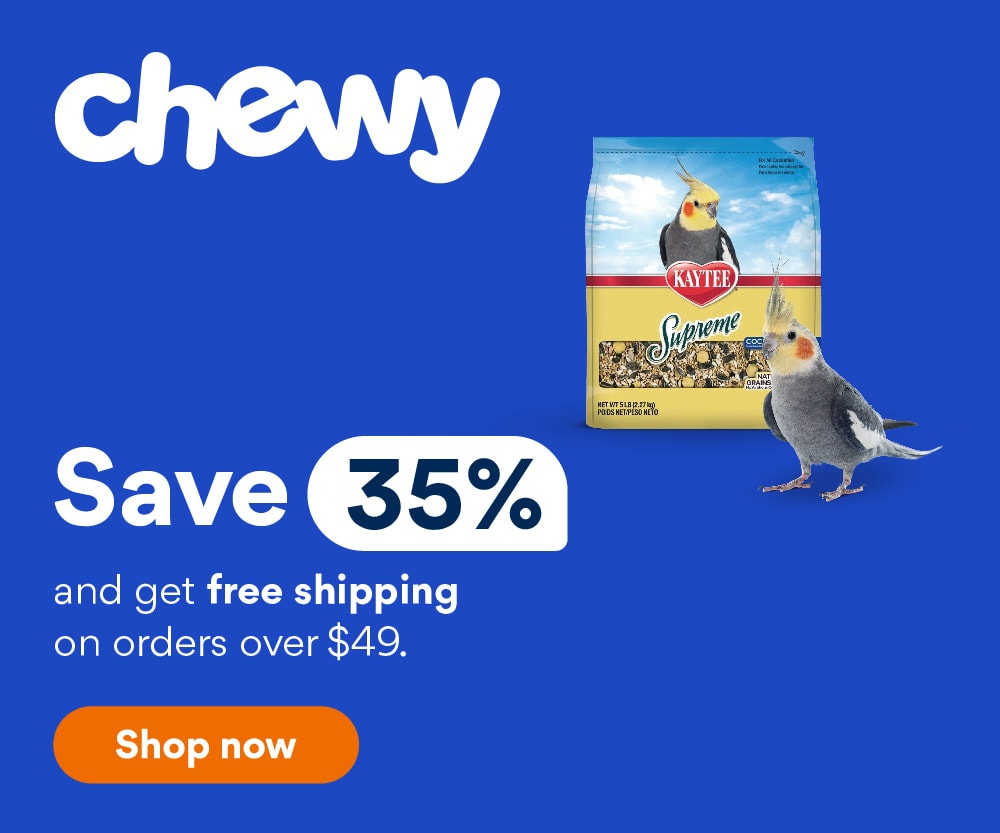When Do Cockatiels Molt? Vet-Reviewed Facts & Care Tips
Updated on
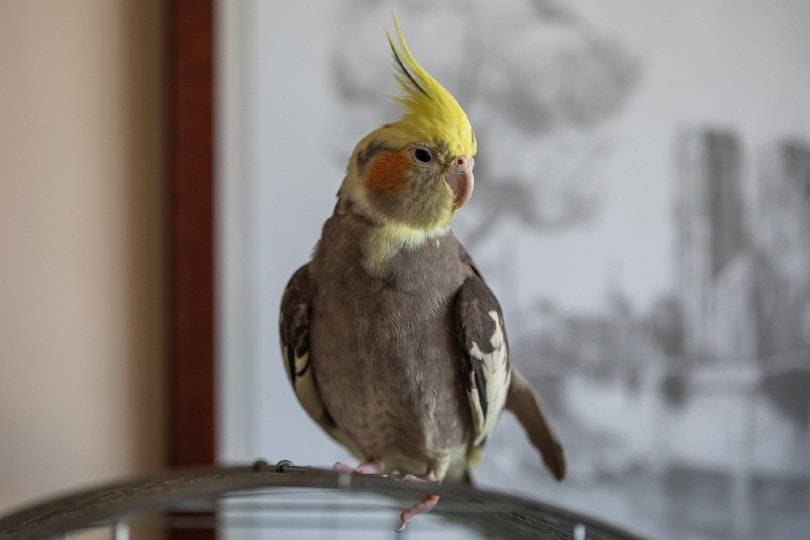
Molting is a normal process that cockatiels go through that involves shedding and regrowing feathers. They start molting between six and 12 months old and will continue doing so once or twice a year for the rest of their lives. Read on to learn more about molting, what to expect, and how to make your cockatiel more comfortable with the process.
What Is Molting?
To keep themselves in tip-top shape, birds must molt yearly to rid themselves of their old or damaged feathers. In addition, molting helps renew their plumage, promoting flight, temperature regulation, and displays of courtship.
Over the course of a year, every feather a bird has will be replaced by a new one. The process occurs gradually and bilaterally to ensure the bird isn’t left bald and unable to fly.
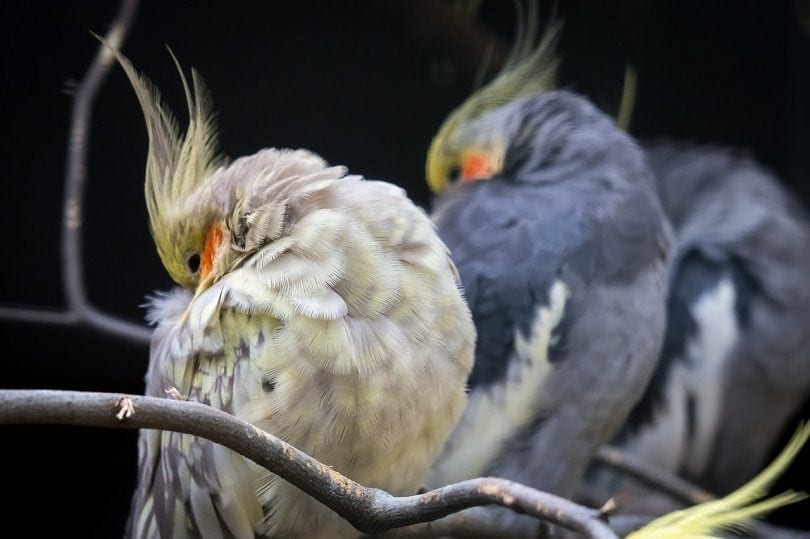
When Do Cockatiels Molt?
Wild cockatiels, like all wild birds, will typically molt with the changing seasons or day length. In fact, the season changes, and daylight hours play a huge part in many processes, including migration and breeding.
Temperature, nutrition, and general health can also affect a cockatiel’s molting schedule. Most wild birds will molt in the spring and fall, though they still may replace old or lost feathers in the “off seasons.”
In captivity, however, a cockatiel’s body can become confused as your bird is always around artificial light instead of natural sunlight. Companion birds don’t see temperature or daylight fluctuations as their wild counterparts. In addition, your lifestyle will ultimately affect your pet bird’s molting schedule, exposing them to various light cycles that can cause irregular or incomplete molts. Still, you should expect your captive cockatiel to molt two or so times per year.
What Should One Expect During a Cockatiel’s First Molt?
Your young cockatiel will molt for the first time between six and 12 months of age. When this happens, a cockatiel will shed away their baby feathers, and their crest will often grow longer. Your baby’s body color can change to their adult coloring, though females usually keep their juvenile coloration throughout adulthood.
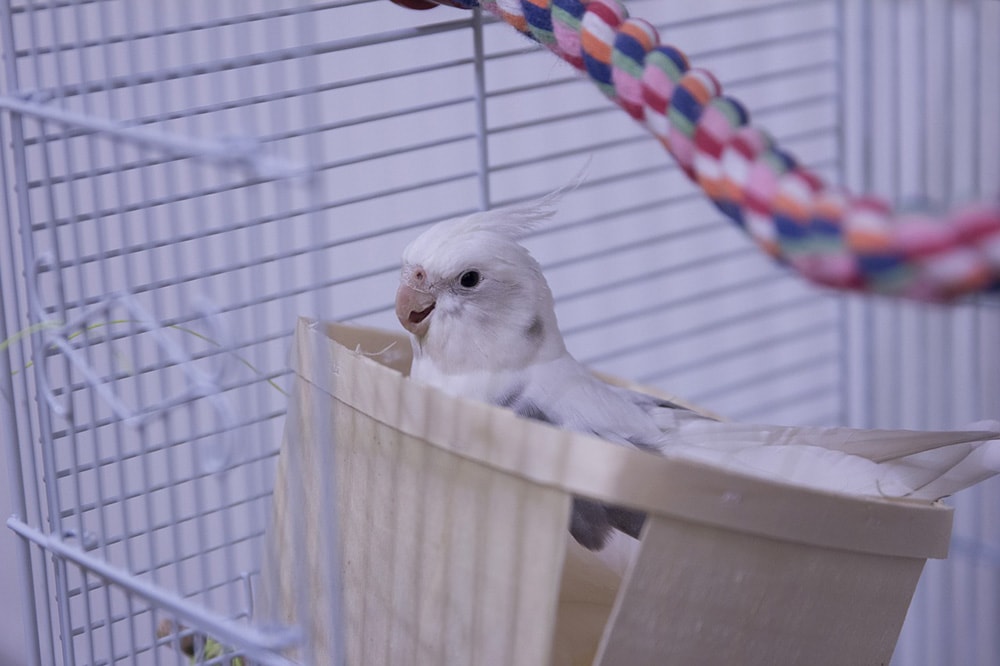
How Long Does a Cockatiel’s Molt Last?
Once a molt has begun, it can last between two weeks to three months. The length of each molt will vary from bird to bird and depends on factors like exposure to sunlight, nutrition access, and stress levels.
Most healthy cockatiels will finish a molt within three weeks. Those who take a little longer to complete the process may have unnatural molts due to stress or illness.
 Do Molting Cockatiels Need Special Care?
Do Molting Cockatiels Need Special Care?
You can do several things to help your cockatiel feel more comfortable during their molts.
1. Provide Adequate Nutrition
Molting requires proper nutrition, as your bird has an increased need for protein, calcium, and iron. Making new feathers requires energy and nutrients, so ensuring your cockatiel’s nutrition is dialed in during this period is essential. Provide extra protein by offering hard-boiled egg yolks or high-protein bird foods.
During periods of heavier molts, you may notice your cockatiel is less active and quieter than usual. They may develop health issues as their immune system is under extreme stress, making nutrition even more important.
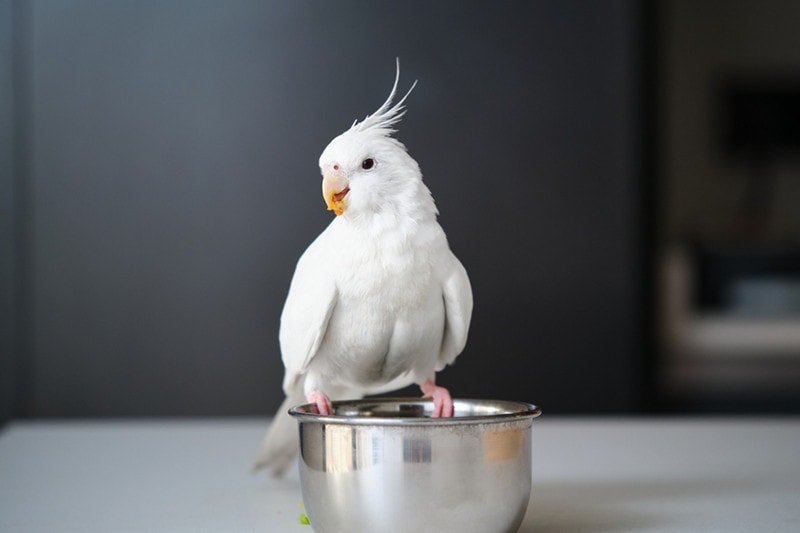
2. Promote Preening
You can help with the molting process by assisting your cockatiel in getting the feathers around their neck and face. If you’re close to your bird, they should allow you to scratch around those areas to remove the loose feathers they cannot reach on their own. However, don’t be offended if your assistance is not welcome with open arms. Molting birds can get rather cranky, so don’t take it personally.
4. Keep a Constant Temperature
Keep the temperatures in your bird’s cage and room stable. Cockatiels hate temperature shifts in general, but especially when they’re molting. So, aim to keep the temperature in your bird’s room between 75°F and 80°F (23°C and 26°C).
5. Give Your Cockatiel Space
Your cockatiel may be grumpy and irritable, so give your bird the space to molt without getting too involved. Let them sleep as much as they want to, and avoid touching them unless you’re helping to preen their loosened feathers.
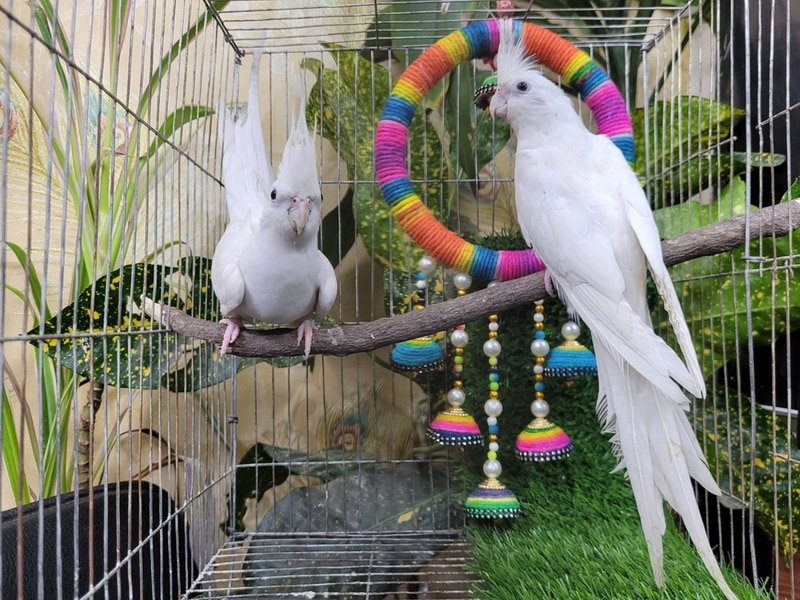
What About Abnormal Molts?
An underlying health issue may be at play if your cockatiel isn’t molting heavily at least once a year. You’ll want to consult your avian vet for advice and recommendations in this situation.
Cockatiels are vulnerable to a virus known as Psittacine Beak and Feather Disease (PBFD). This condition attacks a bird’s immune system and the cells responsible for their feathers and beak. PBFD often rears its ugly head during molting season. If you notice your cockatiel’s feathers growing back abnormally or not growing back at all, a visit to the vet is in order. Unfortunately, there is no cure for PBFD, which is highly contagious, so the sooner you seek advice, the better.
Final Thoughts
Molting is a normal process that all cockatiels go through at least once or twice a year. You can expect your bird to begin molting for the first time between six and 12 months of age and then once or twice a year afterward.
Molting can be an exhausting and trying process for your bird. Your parrot may feel cranky and irritable and could put their frustrations out on you. Don’t feel offended. Give your cockatiel the time they need to complete their molt, and you’ll have your sweet, friendly bird back in no time.
Featured Image Credit: Birute Vijeikiene, Shutterstock


 Do Molting Cockatiels Need Special Care?
Do Molting Cockatiels Need Special Care?